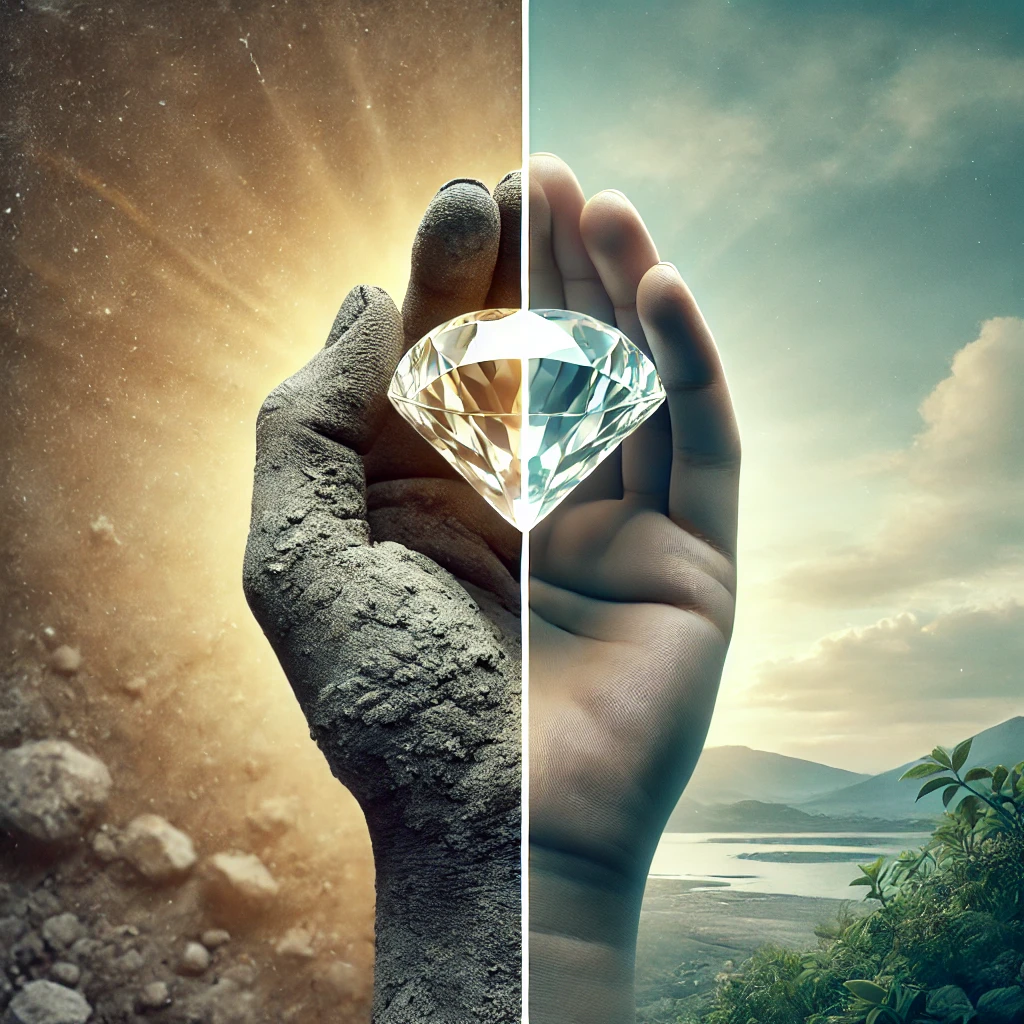
You may be familiar with the movie Blood Diamonds, featuring renowned actor Leonardo DiCaprio, and have pondered the authenticity of its storyline. Blood diamonds, which are also called conflict diamonds, are diamonds mined in war zones. They are sold for grim purposes such as insurgency, terrorism or any activities that harm humankind.
As defined by the United Nations, these blood diamonds are mined in areas controlled by forces opposed to the legitimate, internationally recognised government of a country. They are sold to fund military action against that government. This term was formulated during the 1990s when gruesome civil wars were waged in western and central Africa, where a lot of diamonds come from. Three specific conflicts—in Angola, the Democratic Republic of the Congo, and Sierra Leone—directed attention to the destructive role of diamonds. The term aims to draw awareness to the diamond industry in specific regions and educate the public about its negative impacts.
What exactly are Blood Diamonds?
According to the Kimberly Process core document based on the United Nations General Assembly Resolution 55/56, Conflict Diamonds stem from rebel movements or their allies to finance conflict aimed at undermining legitimate governments. Blood Diamonds is used in the context of human rights violations in these war-like conditions. While both terms are often used interchangeably, it can be argued that “blood” more strongly shows the violence against civilians compared to the commonly used term “conflict diamonds.” The connection between the black market trade of diamonds and the violations against human rights is evident. The best examples of those atrocities were the civil war in Angola and Sierra Leone. The rebel group in Angola, UNITA, was able to fund its military operations because of diamond sales between 1992 and 1998. Those sales prolonged the civil war, which resulted in around 1 million lives lost. At the same time, the civil war in Sierra Leone was also connected to an unethical diamond trade. The terror group RUF used horrific tactics against humankind such as the amputation of limbs, child soldiers and many more atrocious war crimes.
How are Blood Diamonds combated?
To avoid these crimes from happening and to ensure a way to trade diamonds ethically, NGOs, businesses and the government together created the Kimberley Process Certification Scheme in 2002. The Kimberley Process aims to ensure a documented trail between diamond miners and consumers of diamond products. This way consumers can distinguish between the legal diamond trade and the illegal. Such a system for identifying the country of origin for diamonds is crucial, as no current technology is able to determine the source through analysis of the stone. The core of the Kimberley Process Certification Scheme is to prevent the flow of blood or conflict diamonds and implement safeguards on shipments. Once the rough diamonds have this certification, the diamonds are established as “conflict-free”. The Kimberley Process Certification Scheme mandates that all participants comply with its specific rules and terms. A few examples of these terms are as follows:
1. Satisfy ‘minimum requirements’ and establish national legislation, institutions and import/export controls
2. Commit to transparent practices and the exchange of critical statistical data
3. Trade only with fellow members who also satisfy the fundamentals of the agreement
4. Certify shipments as conflict-free and provide the supporting certification
We at Tim&Co. have implemented an ethical strategy when choosing top suppliers and verifying their compliance with the Kimberley Process. We take pride in providing full traceability of our diamonds’ journey, from the initial mining stage to the finished product. Our pieces are accompanied by a Certificate of Authenticity guaranteeing their responsible sourcing. Our dedication to this cause is unwavering, as we recognise the significant impact we can make in promoting environmental and social responsibility. We prioritise working with respect for both people and the planet in all that we do.

